3D printing of molybdenum-containing materials
Author:kangbote Time:2020-05-14 11:27:08
3D printing of molybdenum-containing materials
3D printing is a manufacturing process with great potential, because it can produce complex parts without expensive tools and equipment. The aerospace industry has a strong interest in this, and this industry has many opportunities to use molybdenum.
Revolutionary changes in manufacturing methods have greatly changed the course of social development. For example, the first use of tools, the development of materials from stone to bronze to iron, the invention of printing technology and mass production. With the advent of 3D printing, humans are ushering in an exciting period of development. Not only can text be printed, but objects can also be printed.
What is 3D printing?
3D printing or additive manufacturing (AM) is a method of manufacturing three-dimensional objects using a computer-controlled "printer". It has been used to manufacture various products, such as biomedical organizations and rocket parts. The printer uses digital files such as CAD (Computer Aided Design) drawings to construct each part by printing layer by layer, giving each layer drying or curing time, so it is called "additive manufacturing". It is different from mechanical processing. Traditional mechanical processing is to remove material from a large block of raw materials and finally form into the required parts, that is, subtractive material manufacturing technology. 3D printers can use a variety of "printing materials", including metals (such as stainless steel, nickel alloys, aluminum and titanium), plastics, ceramics, and even living tissue.
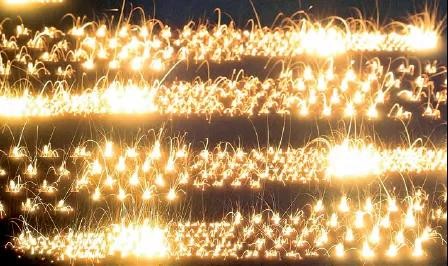
This complex object is manufactured by laser melting 3D printing with metal powder. This technology can quickly manufacture very complex parts.© www.siemens.com / press
Since the mid-1980s, 3D printers have been continuously developed, initially mostly used for plastic products, but also for metal sintered products. The early stage is mainly used for one-off parts, such as prototyping during product development. In the following decades, engineers developed the manufacturing technology of actual production parts, and the application of some industrial metals has reached commercial scale. By 2020, 50% of 3D printing products will be final products.
With 3D printing, there is no need to produce thousands of parts to thin the fixed cost of equipment and storage, which reduces costs and shortens delivery time. For example, if the spare parts of the old washing machine can be printed when needed, it can greatly simplify the inventory management of spare parts and save warehouse space. 3D printing can realize large-scale product customization and can manufacture complex parts that cannot be produced in other ways. It may subvert the concept of mass manufacturing. One day in the future, consumers can download an electronic file of a product just like downloading music or movies now, and then print out the product at home or at a local 3D production center. Although this may be out of reach for the mass market, for some enthusiasts, this is already a reality. A new industrial revolution may be coming, it reduces risks, shortens delivery time, and saves costs.
3D printing of metal
3D printed metal uses a focused laser or electron beam to melt fine metal powder. The powder is added to the processing chamber, the size of each layer is controlled, the parts are melted and built in an inert atmosphere to minimize oxidation. The layers are melted and stacked gradually until the finished parts are completed. Each layer is between 20 and 100 microns thick and is an easy-to-build "building block." The remaining unused powder can be collected, sieved and used again.
Depending on the materials and processes, the performance of the finished parts may be similar or better than the casting materials. For many applications, this is sufficient, although in some high-end applications (such as turbine blades), its performance is not enough to replace traditional manufacturing technology products.
Molybdenum plays an important role in the 3D printing of metals, as can be seen from the alloys printed by EOS, a leading company in this field. The metal powders used include: 316 stainless steel with a molybdenum content of at least 2.25%, maraging steel with a molybdenum content of 4.5%, a cobalt-chromium alloy with a molybdenum content of 5%, and a nickel-based alloy with a molybdenum content of at least 8% such as UNS N06002 (Hastelloy®-X) or UNS N06625 (Inconel® alloy 625). Some major industries, including medical and dental, tool manufacturing and aerospace, have begun to routinely adopt 3D printed metals.
.jpg)
Laser melting of metal powder during 3D printing ©www.siemens.com/press
Design and application of metal parts
Compared with traditional manufacturing, the advantage of 3D printing is that it can produce almost any shape and very complicated parts without the need to assemble parts. It allows designers to break through the design limitations of traditional subtractive manufacturing, which is a huge advantage for high-tech metal parts. These parts are usually made up of multiple sub-parts made of expensive alloys, which are difficult to manufacture by conventional methods and costly. Designers can optimize the weight of the parts, eliminating any materials that are not strictly necessary in function. In this way, it is possible to achieve extremely light weight and reduce weight by as much as 80%. In the future, as long as there is a suitable 3D printer, the parts can be printed anywhere, so that the spare parts can be printed on site or at the local center without waiting for the long-distance delivery of the replaced parts. Engineers even dreamed of bringing 3D printers into space to produce any parts needed for repairs on the spacecraft.
The aerospace and gas turbine industries are passionate about 3D printing. Weight and material cost are important considerations here, because turbine parts are usually made of very expensive super alloy materials. In some cases, 90% of the raw materials are removed by machining. The remaining chips and turning chips must be returned to the alloy manufacturer for remelting. In contrast, 3D printing can recycle excess powder, and parts may use only 10% of the raw materials required by conventional processes. The researchers also conceived parts made of new alloys and ceramics that cannot be produced by traditional manufacturing techniques.
Major manufacturers of gas turbines and jet engines are actively developing 3D printed components. Siemens uses 3D printing to create a complex multi-element gas turbine component integration, which can only be achieved through additive manufacturing. They also used the technology to repair gas turbine burners. The new Hastelloy X alloy nozzle was 3D printed onto the old burner, the maintenance time was shortened from 44 weeks to only 4 weeks, and the parts were upgraded to the latest design. GE built the world's first 3D printing facility dedicated to jet engine parts. They produced fuel nozzles for the CFM LEAP engine, each requiring 19 cobalt-chromium alloy nozzles. The traditional nozzle is composed of 20 independent parts, and the 3D printed nozzle is made of only one part, which improves the durability by five times and reduces the weight by 25%. Cobalt-chromium alloys containing 5% molybdenum have been used in dental implants and artificial joints for many years, and now there are millions of crowns and bridges produced by additive printing every year.
GE also promotes the development of 3D printing by sponsoring related projects. The 3D printing production exploration project highlights their interest in refractory metal printing. The project challenged the participants to produce high-precision parts made of refractory metal for the field of X-ray medical imaging. 3D printing can produce parts with complex shapes and almost all metal materials, even high-melting metal parts like molybdenum. IMOA member company Plansee announced that they have perfected the additive manufacturing process for tungsten and molybdenum products in the past few years.
This new technology also faces many challenges. Its production speed is relatively slow, so it is mainly used for manufacturing prototypes and small-scale production. For high-flow applications, the surface is often rough and requires polishing or other finishing. The size of the parts that can be produced is also limited. At the time of writing, the largest metal part (aluminum gear part) that can be produced by 3D printing is 474 x 367 x 480 mm. The printable size will continue to increase in the future.
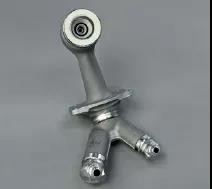
3D printed cobalt-chromium alloy can be used to make complex fuel nozzles on one part instead of 20 parts © GE Aviation
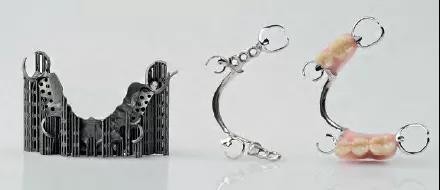
Manufacturing metal parts of complex partial dentures, from left to right: 3D printing partial dentures on the support structure, removing the support structure and polishing, after completion
What is the future prospect?
The future of 3D printing is bright. This technology can shorten the development time of complex parts and reduce costs, making it possible to optimize the design, which can not be manufactured by conventional methods, and can reduce the production time and cost of small batch production and spare parts. Additive manufacturing provides the world with a new manufacturing method that complements existing technologies and helps stimulate economic growth. It will fulfill the dream of spare parts on demand anywhere in the world.
Metals (including molybdenum) have great potential. Many 3D printing research efforts have focused on high-value, high-performance, difficult-to-machine alloys and pure metals. Molybdenum is usually an important part of such materials, not only to meet the needs of existing materials, but also to play an important role in the development of new alloys specifically for 3D printing.
TAG: molybdenum 3D print



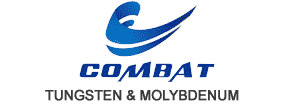
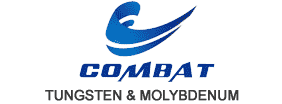

.jpg)
封面.jpg)
.jpg)
.jpg)




